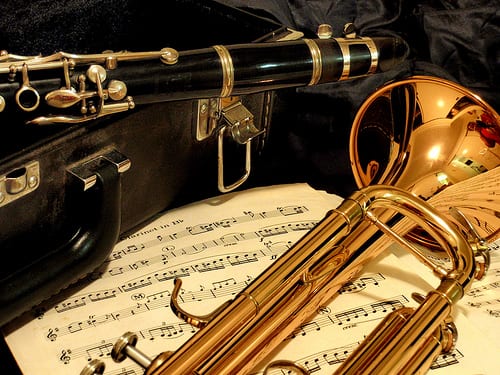 Over the past few months we’ve discussed several practicing techniques – including practicing when you’re out of town and don’t actually have your instrument with you (see: 5 Ways to Practice Without Your Guitar and How to Practice the Piano… Outside of the Studio), how to extend your practice sessions when you feel stuck, as well as how to use a metronome to help improve your rhythm, timing and tempo.
Over the past few months we’ve discussed several practicing techniques – including practicing when you’re out of town and don’t actually have your instrument with you (see: 5 Ways to Practice Without Your Guitar and How to Practice the Piano… Outside of the Studio), how to extend your practice sessions when you feel stuck, as well as how to use a metronome to help improve your rhythm, timing and tempo.
But how do you ensure the time you’re spending practicing is truly effective? Think about it like a sports game – coaches spend time putting together a game plan to make sure every team member is on board and knows what to do. No wasting time. Just get straight to the winning plays. Sure, you may only have yourself to worry about when you’re practicing, but the idea is equivalent – before pulling out your instrument, know your game plan!
1. Always begin with your goals in mind. Setting goals is the best way to ensure you’re on the right track. Once you’ve set the overarching, most important ones (e.g. “This year, I’m going to perform Pachelbel’s Canon in D at the spring recital”), you can break them down into smaller, more specific goals for each practice session (e.g. “Today, I’m going to practice these 3 bars slowly until I get the articulation right”). Knowing what you truly want to accomplish and how you plan to prepare for upcoming auditions or performances can help you understand exactly what you should be working on each day.
2. Review your lesson journal. Most music teachers will keep track of what you’ve been working on, and your assignments for the following week, in a lesson journal or notebook (TakeLessons students: yours can be found in your online account). It’s always a good idea to review this before you start practicing, so you’ll have an easier time remembering the feedback you’ve received so far. It will also help prepare you for your next lesson, so as to not waste any time when you get there.
3. Develop a practice routine. Most students benefit from a set practice time, whether it’s in the morning, right after school/work, or later on in the evening. Think about when you tend to focus best, and then stick to the routine. If you’re having trouble finding time, or if you keep forgetting, try actually blocking the time out in your calendar, writing yourself a note, or signing up for a service like Remember the Milk, an app that will send you a text or email reminder at a designated time.
4. Minimize distractions. Make the most of your time spent practicing by making sure you’re doing just that – practicing! The more distractions you have around you, the less effective your session will be. So take the time to “set the stage” – turn off your phone, put the dog or cat in another room, get all of your equipment ready to go (music, music stand, metronome, tuner, a glass of water, etc.) and turn the TV off. Also, make sure your room is properly lighted and ventilated, and your seating area is comfortable for you.
5. Have fun! Above all, don’t forget that playing music is meant to be fun! If you need to shake things up, give yourself permission to play through some “just for fun” songs every now and then. Don’t forget to take breaks if you’re committing to a longer practice time, and if needed, take a whole day off if you’re feeling overwhelmed. Spend time cultivating your creative side outside of your instrument. And never underestimate the power of a reward if you reach a specific goal!
As always, your music teacher can help guide you in the right direction if you’re having trouble determining what your goals are or what you should be focusing on. (Need help finding a teacher near you? Click here!)
– Suzy S., TakeLessons staff member and blogger
How do YOU ensure you’re making the best use of your practice time? Share your own expertise with the community – leave a comment below, or stop by our Facebook page! Like these posts? Sign up to receive daily updates right to your inbox! Click here to subscribe.
You might also like…
– Your Guide to Setting SMART Music Goals
– How to Use a Metronome for Efficient Practice
– Your Leap Day Guide to Effective Music Practice
Suzy S.
